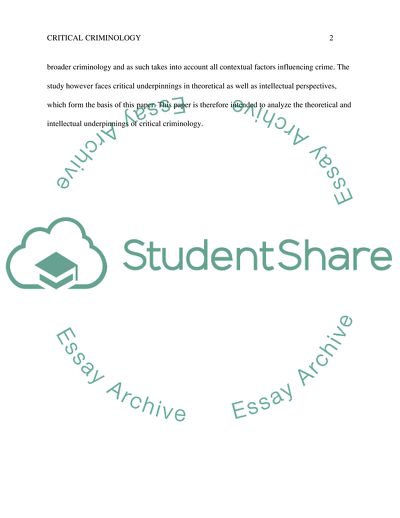Cite this document
(Critical Criminology Case Study Example | Topics and Well Written Essays - 2000 words, n.d.)
Critical Criminology Case Study Example | Topics and Well Written Essays - 2000 words. Retrieved from https://studentshare.org/law/1805686-analyse-the-theoretical-and-intellectual-underpinnings-of-critical-criminology
Critical Criminology Case Study Example | Topics and Well Written Essays - 2000 words. Retrieved from https://studentshare.org/law/1805686-analyse-the-theoretical-and-intellectual-underpinnings-of-critical-criminology
(Critical Criminology Case Study Example | Topics and Well Written Essays - 2000 Words)
Critical Criminology Case Study Example | Topics and Well Written Essays - 2000 Words. https://studentshare.org/law/1805686-analyse-the-theoretical-and-intellectual-underpinnings-of-critical-criminology.
Critical Criminology Case Study Example | Topics and Well Written Essays - 2000 Words. https://studentshare.org/law/1805686-analyse-the-theoretical-and-intellectual-underpinnings-of-critical-criminology.
“Critical Criminology Case Study Example | Topics and Well Written Essays - 2000 Words”. https://studentshare.org/law/1805686-analyse-the-theoretical-and-intellectual-underpinnings-of-critical-criminology.


